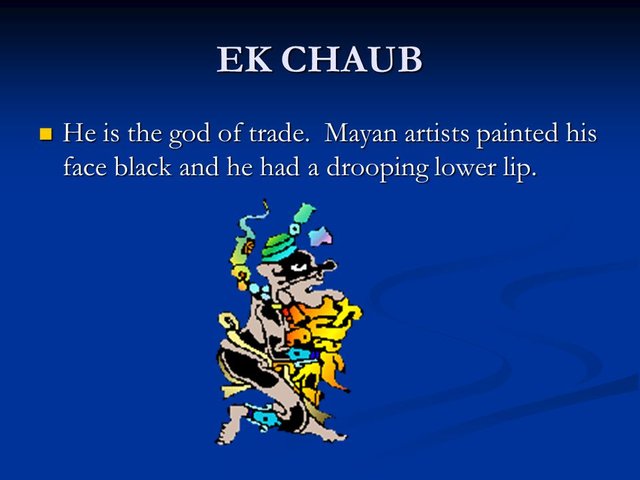Nearly 200 artifacts were found, most of which appear to be from the Mayan civilization, according to Mexico’s National Institute of Anthropology and History. Some bones appear to be at least 9,000 years old. The explorers found a shrine to the Mayan god of commerce as well, with a staircase structure inside of the cenote.
(Cenote: a deep natural well or sinkhole, especially in Central America, formed by the collapse of surface limestone that exposes ground water underneath, and sometimes used by the ancient Mayans for sacrificial offerings. Origin of cenote. Mexican Spanish. Yucatec.- Dictionary.com)
The animal remains include gomphotheres -- an extinct elephant-like animal -- as well as giant sloths and bears, archaeologists told a press conference.
Some human artifacts are burnt human bones, ceramics, wall etchings and more.


Stairs heading to the cenote- Photo Archive Gran Acuifero Maya, INAH.
Some of the animals and humans who ventured inside never made it out alive. Today, their remains are a treasure trove for scientists, enabling them to piece together bits of the cave's history dating all the way back to the Pleistocene epoch (2.6 million to 11,700 years ago).

Remains of a Pleistocene bear from 2.5 million years ago, in the Sac Actun underwater cave in Quintana Roo state, Mexico, in an image published by the National Institute of Anthropology and History (INAH) on February 19, 2018

Remains of a mask in the Sac Actun underwater cave in Mexico's Quintana Roo state, from an image published by the National Institute of Anthropology and History (INAH) on February 19, 2018

Human Jaw remains in the Sac Actun underwater cave in Quintana Roo state, Mexico, in an image published by the National Institute of Anthropology and History (INAH) on February 19, 2018

Submerged human skull found in the Sac Actun underwater cave in Mexico's Quintana Roo state, from an image published by the National Institute of Anthropology and History (INAH) on February 19, 2018



Pottery found in the Sac Actun underwater cave in Quintana Roo state, Mexico, images published by the National Institute of Anthropology and History (INAH) on February 19, 2018


Fist of the Mayan god of trade- photo from National Institute of Anthropology and History (INAH)

‘Mask of the Mayan god of trade’- National Institute of Anthropology and History (INAH)

Google Images
Ek Chuaj can either be depicted as black-and-white striped, as he is in the Dresden Codex, or entirely black, as he is in the Madrid Codex. Other distinguishing characteristics of Ek Chuaj are his mouth, which is encircled by a red-brown border, his large lower lip, and the presence of two curved lines to the right of his eye. Other depictions of Ek Chuaj show him as an old man with only a single tooth. This is the appearance he most regularly takes in the Madrid Codex. He has been depicted with a pack of goods commonly carried by merchants, and his carrying of a burden is also indicated by the rope or tumpline tied around his head. He may also carry a spear and, in some instances, a scorpion's tail.- Wikipedia
Video of New findings in Sac Actún: The world's largest flooded cave
WATCH HERE:
For more photos source: http://www.inah.gob.mx/en/boletines/6927-promoveran-al-sistema-sac-actun-ubicado-en-tulum-mexico-como-bien-mixto-ante-la-unesco
Source: https://www.afp.com/en/news/826/archaeologists-find-fossils-mayan-relics-giant-underwater-cave-mexico-doc-10h2zl1
Source: http://www.newsweek.com/archaeologists-mexico-discover-treasures-mayan-civilization-and-giant-sloth-812882

What an amazing discovery this is. There must be so much they can learn. I only hope they are willing to share the truth of their discoveries with everyone.
Downvoting a post can decrease pending rewards and make it less visible. Common reasons:
Submit
Me too! It's a treasure cave of history. Love it!
Downvoting a post can decrease pending rewards and make it less visible. Common reasons:
Submit
Wow keren
Downvoting a post can decrease pending rewards and make it less visible. Common reasons:
Submit
Indeed- Wow! Very exciting! :) Thanks for stopping by!
Downvoting a post can decrease pending rewards and make it less visible. Common reasons:
Submit
Hi! I am a robot. I just upvoted you! I found similar content that readers might be interested in:
https://today.rtl.lu/news/science-and-environment/1138449.html
Downvoting a post can decrease pending rewards and make it less visible. Common reasons:
Submit
Thank you for the link. I included the links I sourced in the post. :)
Downvoting a post can decrease pending rewards and make it less visible. Common reasons:
Submit
This really interesting! Thanks for sharing.
Downvoting a post can decrease pending rewards and make it less visible. Common reasons:
Submit
Thanks for stopping by and commenting! :)
Downvoting a post can decrease pending rewards and make it less visible. Common reasons:
Submit